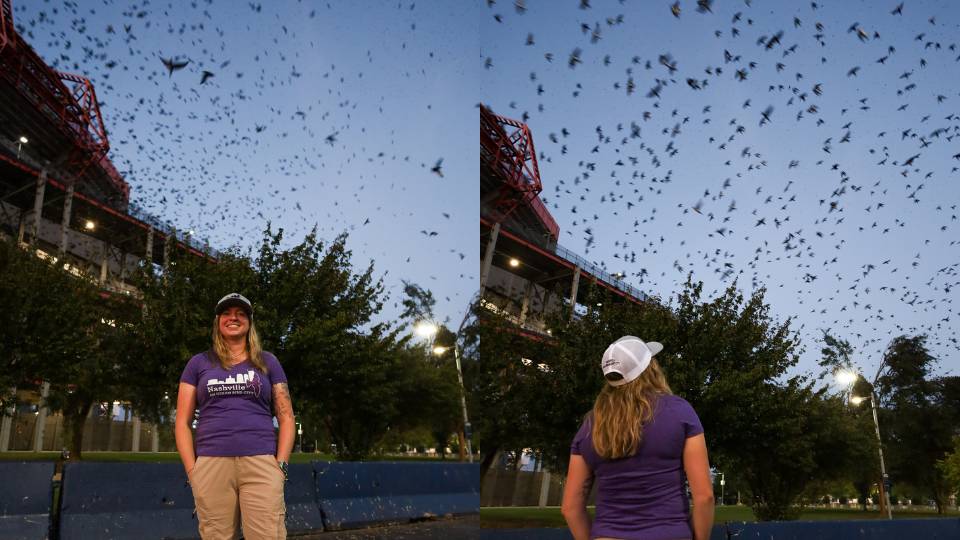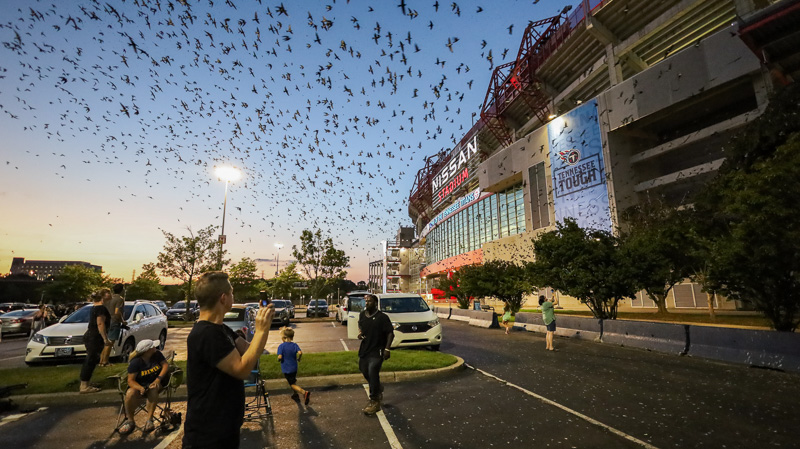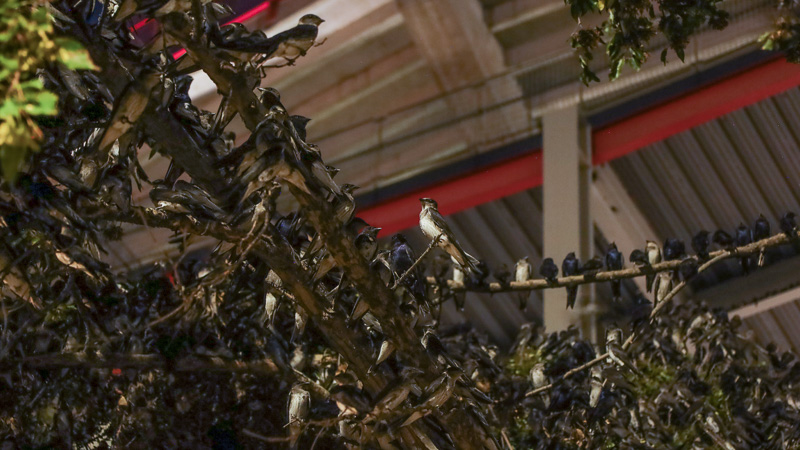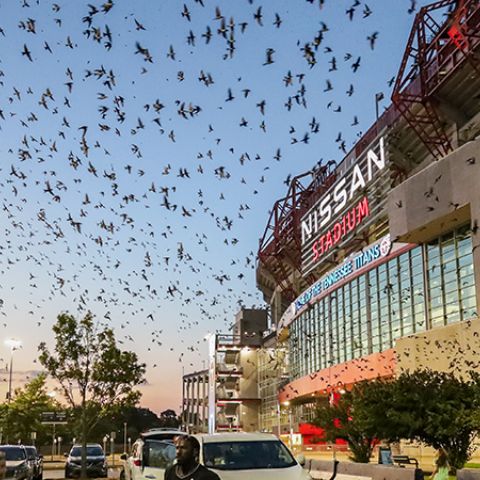Our Avian department continues to participate in conservation work in Middle Tennessee by monitoring and supporting the Urban Bird Treaty and Purple Martin roost. Read the updates on this project below.
You may have noticed flocks of birds flying in a unique pattern in the evenings. Those birds are North America’s largest swallows called Purple Martins. While European Starlings flock and perform a similar murmuration pattern, they are only visible in the fall and winter months once the Purple Martins have migrated. Purple Martin adult males can be identified by their dark bellies, while females display more brown and gray coloring. These birds breed in North America and migrate to South America for the winter.
Conservation Efforts
As part of our conservation efforts, Nashville Zoo is one of many contributing partners and newly Steering Committee member to The Urban Bird Treaty program (UBT). In 1999, the program was introduced by US Fish and Wildlife to New Orleans and Chicago as a way for urban communities to unite to make their cities more hospitable to native or migratory birds while also finding ways to educate the public about birds.
By being a member of the program, Nashville Zoo has pledged to help educate the public about birds and conservation while also assisting in local conservation efforts such as monitoring the Purple Martins. Nashville Zookeeper Rachael Payton is a member of the Purple Martin task force and an avian educator. She serves as the Zoo’s representative and committee chair member for the UBT. Payton plays an influential role in the Zoo’s bird conservation efforts by working to protect native species through various projects, including the Zoo’s Bird Box Monitoring Program. This enables her to work with local bird researchers and obtain bird banding permits, furthering her efforts and the Zoo’s contributions to research and conservation in the Middle Tennessee area. Recently, the Purple Martin Conservation Association declared August 10 as National Purple Martin Conservation Day.

Purple Martin Details
Purple Martins have lived around Nashville and along the Cumberland River for hundreds of years, arriving at the heart of our city every summer and gathering every night after a day of foraging and flying. The downtown area is one of the largest roosts for the birds, with annual estimates typically around 150,000-180,000 individual birds.
These shimmery birds are aerial insectivores, relying on flying insects like beetles, flies, and dragonflies for their diet. Dependent on humans, eastern Purple Martins rely heavily on human-made nesting sites such as martin boxes or gourd systems. Becoming a Purple Martin "landlord" used to be so common that John James Audubon would pick his sleeping accommodations based on the appearance of the Purple Martin houses. Typically nesting in colonies, they produce one clutch of three to six eggs per season, with the young leaving the nest at around 28 to 29 days old.
When they complete their nesting cycle, in late June through mid-August, young Purple Martins begin to flock to downtown Nashville for night-time, pre-migration roosts before their journey to South America. Sometimes, their roost numbers can get so large that you can see their distribution on weather radars.

Watch the Migration
For those interested in viewing the Purple Martins before they travel south in late August and early September, it is free to see them around the pedestrian bridge located near Broadway, usually amassing in numbers about half an hour before sunset and descending into their roosting trees a little after the sun has gone down. Nissan Stadium has free street parking near H Lot for viewing. The public is invited to park and view the birds up close. To be as respectful as possible to our flighted friends, we recommend no flash photography, no loud noises, and do not attempt to climb the trees or harass the birds while they are settling in for the night. And as our recommendation to bird watchers, do not forget to bring a hat!
So next time you are in the downtown area in the dog days of summer, peek up to watch the phenomenon of the Purple Martins.

Collaborations between Zoos and non-profits allows organizations, like UBT, to achieve their mission and make a broader impact in the realm of conservation. Our experienced staff is involved in research, habitat protection, breeding programs and education initiatives around the globe and in our own backyard. For more information on Nashville Zoo’s conservation efforts and to donate, visit www.nashvillezoo.org/conservation.



